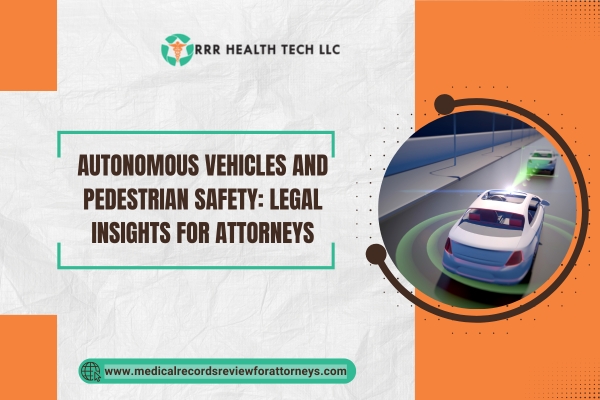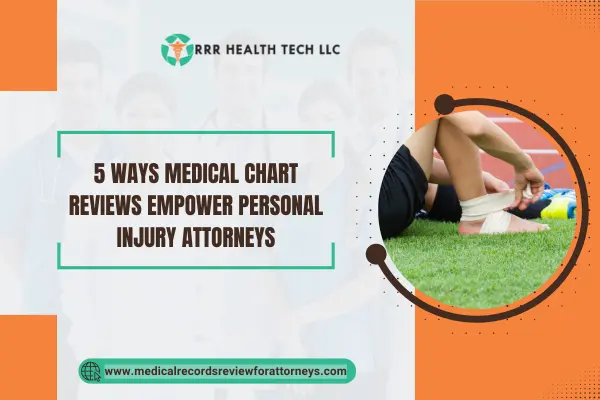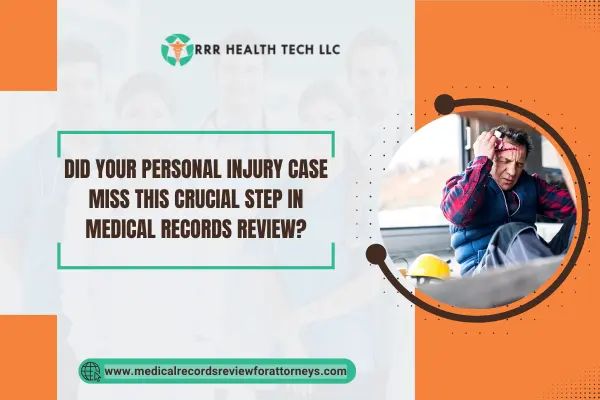
Introduction
With self-driving cars (AVs) rapidly becoming popularized across the globe, keeping up with their advantages and draw backs while on the road is particularly important with respect to pedestrian safety (AVs). This article examines how self-driving cars recognize pedestrians, the legal implications of accidents with these cars, and the importance of medical records review in assisting lawyers with these cases.
How Self-Driving Cars Identify Pedestrians
The Technology behind AVs
A self-driving car autonomously moves from one point to another with the help of sensors, cameras and artificial intelligence (AI). Critical components comprise of:
• Lidar (Light Detection and Ranging): Scans an area using laser beams to determine whether there is anything from pedestrians to cars to buildings that could impede the way: in other words, it generates a three-dimensional map of the surrounding.
• Radar: Measures the speed and the distance of objects existing around by the use of radio waves being sent out and detecting their echo.
• Cameras: Capture pictures and videos of traffic signals and signs or any pedestrians that may be on the road.
Limitations of Current Technology
Developments aside, self-driving cars continue to grapple with AVs accurately recognizing pedestrians especially in complicated scenarios. Some of these challenges include:
• Poor Weather Conditions: Heavy rain or fog or snow blurs the vision needed for the sensors and cameras.
• Unpredictable Pedestrian Behavior: Action or lack of action has the potential to cause the algorithms within the self-driving cars to fail.
• Environmental Friction: Navigating within a city that has high levels of congestion may pose a challenge when obtaining the required data that can facilitate detection.
How Safe Are Self-Driving Vehicles
According to the National Highway Traffic Safety Administration (NHTSA), AVs have, as of 2024, been involved in roughly a thousand incidents of pedestrian engagement, 30% of which there are reported injuries in. It shows underdeveloped policies that over AVs still require a lot of improvement.
Legal Jurisdiction on Accidents That Involve an Autonomous Vehicle
Who Is Liable?
Assigning liability in AV accidents is never a simple exercise. Some of the most important points of reasonability include:
• Manufacturer Liability: The software or hardware faults might be the reason for the incident and if that is true, the manufacturer is liable.
• Driver Responsibility: The operator of the semi-autonomous vehicle may share partial responsibility for the operation of the vehicle.
• Pedestrian Injuries: Liability can be shared regarding the actions Remoulding of the pedestrian in question and involved in the case.
Contemporary Statutes
• Product Liability Laws: The manufacturer is liable of the particular item’s design, its production, an advertisement, its promotion, and through marketing.
• Negligence Claims: Claims in the AV system are created just as to how incompetent components are put together to ensure safety in operations of the AV.
Other Problems of Law Cases
• Proof of Responsibility: Showing what the reason for a certain event is is difficult on its own, even more when many people take part.
• Prepared Data Concerns: Legal barriers and privacy issues often arise when attempting to use vehicle data as evidence.
The Role of Medical Records Review in AV Accident Cases
Importance of a Medical History
Medical history is significant in personal injury claims with AVs because it assists in proving the following:
• Proof of Suffering: Proof of injuries resulting from the accident is necessary to claim damages.
• Prolonged impact: A well-defined treatment procedure can show how the injuries have affected the victim’s life over time.
How Medical Records Review Services Assist Attorneys
• Efficient Summary creation: Medical records summary companies prepare case- relevant medical documents and file them into properly organized summaries.
• Provided Support by Physician: Medical personnel may provide supportive expert opinion based on provided documents which helps the case greatly.
Case Studies
Case Study 1: The Thompson Incident
• Case Description: In 2023, an automated vehicle hit a pedestrian who was moving through a marked crosswalk.
• Obstacles: Difficulty of establishing that the software of the vehicle had a malfunction, and that the pedestrian adhered to the traffic signal for pedestrians.
• Approach: Used the medical records review service to obtain proof of claimed injuries. Engaged AV technology professionals to evaluate the vehicle’s data.
Case Study 2: Garcia Family v. AV Manufacturer
• Case Summary: The Garcia family got into an accident when a semi-autonomous vehicle ran a light and did not stop for them.
• Issues: Proving the manufacturers responsibility for the software mishap that caused the accident.
• Strategies: Reviewed medical records to prove the family members injuries, and used expert testimony to prove the vehicle’s malfunction.
Conclusion
Attorneys must adapt to the rapid evolution of technology and the self-driven functionalities of cars and understand what these means for the accidents involving the vehicles as well. The use of medical record reviewing services allows attorneys to build better strategic plans for their cases, and thus improve the results for their clients. With how dire the issue of pedestrian safety is, the importance of good, thorough legal counsel in these situations cannot be stressed enough.


